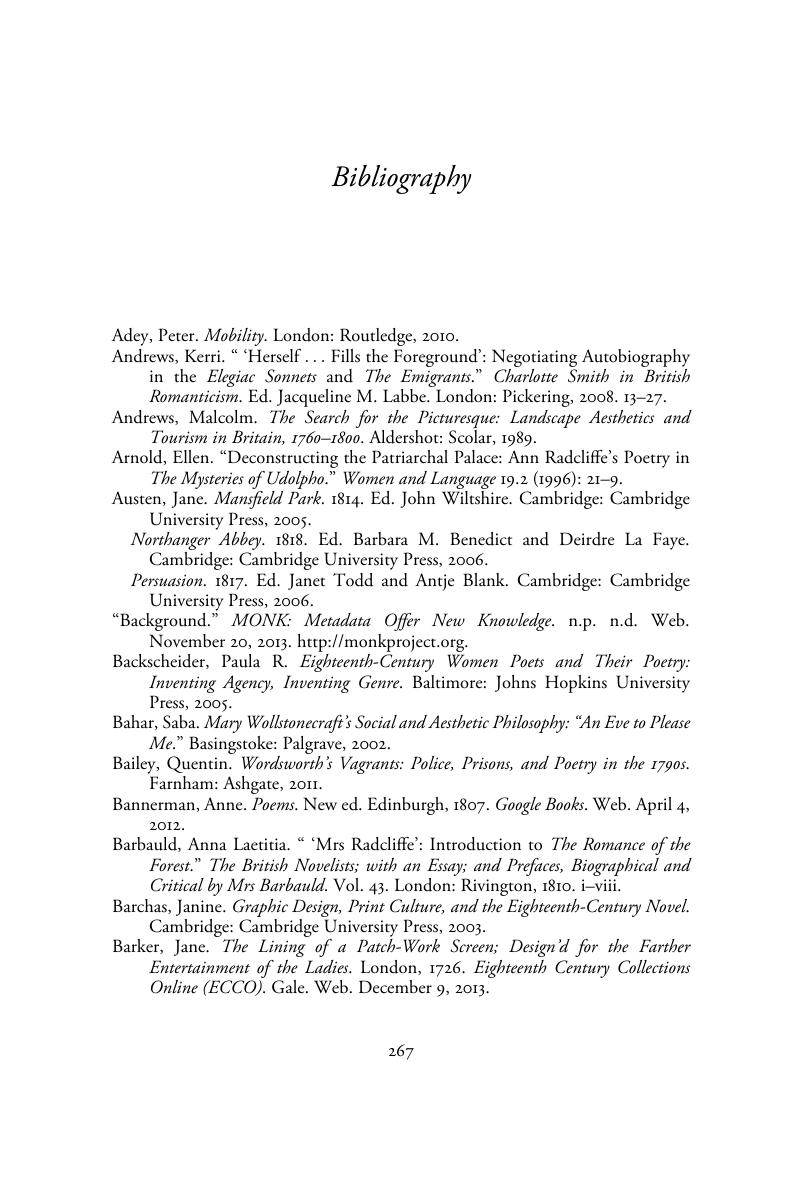Book contents
- Women Wanderers and the Writing of Mobility, 1784–1814
- Cambridge Studies in Romanticism
- Women Wanderers and the Writing of Mobility, 1784–1814
- Copyright page
- Dedication
- Contents
- Illustrations
- Acknowledgments
- Abbreviations
- Introduction
- Chapter 1 “Circling Eye” to “Houseless Stranger”
- Chapter 2 The Desolations of Wandering
- Chapter 3 “The Irresistible Force of Circumstances”
- Chapter 4 “Take, O World! Thy Much Indebted Tear!”
- Chapter 5 “No Motive of Choice”
- Coda
- Notes
- Bibliography
- Index
- Cambridge Studies in Romanticism
- References
Bibliography
Published online by Cambridge University Press: 13 April 2017
- Women Wanderers and the Writing of Mobility, 1784–1814
- Cambridge Studies in Romanticism
- Women Wanderers and the Writing of Mobility, 1784–1814
- Copyright page
- Dedication
- Contents
- Illustrations
- Acknowledgments
- Abbreviations
- Introduction
- Chapter 1 “Circling Eye” to “Houseless Stranger”
- Chapter 2 The Desolations of Wandering
- Chapter 3 “The Irresistible Force of Circumstances”
- Chapter 4 “Take, O World! Thy Much Indebted Tear!”
- Chapter 5 “No Motive of Choice”
- Coda
- Notes
- Bibliography
- Index
- Cambridge Studies in Romanticism
- References
Summary

- Type
- Chapter
- Information
- Women Wanderers and the Writing of Mobility, 1784–1814 , pp. 267 - 283Publisher: Cambridge University PressPrint publication year: 2017



